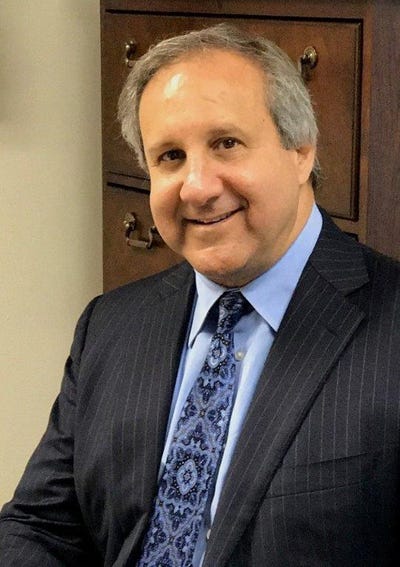SLATs Provide Flexible Plans for Many ClientsSLATs Provide Flexible Plans for Many Clients
The spousal lifetime access trust is a key ingredient in an advisor’s toolbox.

In the current environment of uncertainty, many married clients should consider implementing non-reciprocal spousal lifetime access trusts (SLATs). This strategy can provide a flexible framework for a wide range of clients. The technique can be adapted for more modest estates needing life insurance trusts, or to ultra high net worth clients requiring more aggressive tax oriented estate planning. Regardless of what happens to the transfer tax system, some variant of this planning is likely to benefit the client.
SLAT Benefits
Avoids probate. Assets in a SLAT will avoid probate. This should reduce probate costs and time delays. Assets in the trust are immediately available for post-death distribution.
Reduces/avoids estate tax. About 20 states still have an estate tax. The future of state estate taxes is quite uncertain. For example, New Jersey repealed its estate tax effective in 2018, but most New Jersey estate planners anticipate the tax being reinstated because of state fiscal issues. Whether or not the federal estate tax is repealed, few people are confident that there will ever be permanence or certainty to the federal estate tax system. So, having wealthy clients shift assets out of their taxable estates while retaining alternate avenues to access such property just seems prudent.
Gets taxed as grantor trusts. SLATs, by their very nature (that is, benefiting the grantor’s spouse), are taxed as grantor trusts for income tax purposes. Thus, the grantor bears the income tax burden on trust earnings. This assumption of the tax burden permits the trusts to effectively grow tax-free, thereby enhancing the estate tax and asset protection benefits.
Reduces/avoids a capital gains on death tax. The SLAT technique could apply in one of two different ways, which illustrates its flexibility. Under current law, if the trust holds appreciated assets, the settlor could swap those assets out of the trust and into his name before death by transferring assets to the trust (that is, cash) having an equivalent value. This is an estate tax neutral transaction as the same value remains in both the trust and settlor’s estate. However, the appreciated assets in the hands of the settlor will qualify for an income tax basis step-up at death, thus eliminating the unrealized appreciation. If the estate tax is repealed, it could be replaced by a capital gains tax at death. There might also be a capital gains tax when gifts are made of appreciated assets. Assets transferred to a SLAT before such a change may avoid any capital gains tax on gift. On death, the same swap or substitution power used above can be applied in the opposite manner as a reverse swap. If the settlor has appreciated assets in her name prior to death, she may be able to swap them into the SLAT prior to death and avoid a capital gains tax on death. Under either scenario, it’s possible that the SLAT may provide an income tax planning advantage.
Serves as a traditional irrevocable life insurance trust (ILIT). Life insurance remains at the heart of many estate and financial plans. Regardless of the status of the estate tax, SLATs can function as life insurance trusts or ILITs and be used to protect and manage life insurance proceeds. Because SLATs tend to be more robust that traditional life insurance trusts, they’ll often hold more assets than a traditional “naked” insurance trust, that is, assets other than an insurance policy and a nominal checking account. The income earned on these other assets can be used to pay annual policy premiums and avoid the need for annual cash gifts and associated Crummey powers. SLATs may also be drafted or administered with more flexibility than a traditional ILIT. SLATs might have beneficiaries acknowledge the right to receive annual withdrawal notices and waive the requirement of future withdrawal notices, thereby dispensing with the annual Crummey power ritual many clients find burdensome and annoying. For clients unlikely to face an estate tax, this simplification may be a welcome option. Permanent life insurance policies used to fund the SLATs will represent an alternative asset class (in most to be invested in a conservative manner), and the accumulated cash values can be accessed, tax-free, for retirement or other purposes, via trust distributions to the spouse-beneficiary. In the event of a spouse-beneficiary’s premature death, the surviving spouse is protected because the trust in which the survivor is a beneficiary will collect a death benefit than the surviving spouse and descendants can access. Life insurance cash values will grow tax-free, and the eventual death benefit won’t be subject to either income tax or transfer taxes.
Provides asset protection. SLATs can provide meaningful asset protection from potential claims of creditors and other predators (that is, a beneficiary’s spouse in the event of divorce). This protection applies to assets transferred to the trust if not characterized as a fraudulent conveyance. When a SLAT serves as an ILIT, policy cash values during the insured’s life, as well as death benefit proceeds, should be protected. Because SLATs aren’t self-settled trusts, they shouldn’t be subject to the risks that some commentators believe inherent in self-settled trusts created in certain domestic asset protection trust (DAPT) jurisdictions permitting such trusts, by settlors residing in jurisdictions that don’t permit them. In this regard, it’s critical that only the grantor-spouse contribute property to his DAPT and that jointly owned property not be used to fund either spouse’s DAPT. Some commentators suggest that it’s best to organize the trusts in DAPT jurisdictions (that is, those that permit self-settled trusts) to protect against such a slip-up.
Provides professional asset management. SLATs can be designed to initially, or at some future time, include an institutional trustee. This can provide professional investment and trust management services. Many clients don’t have family members who are both trustworthy and financially savvy enough to serve as fiduciaries, so the flexibility to name a financial institution can be quite valuable. SLATs can (and often should) incorporate a trust protector who can remove and replace the institutional trustee if such trustee fails to perform as desired.
Helps with later life planning. SLATs can incorporate several safeguards to provide robust later life planning. They use distinct tax identification numbers so that they may insulate the settlor from identity theft risks. Naming an institutional trustee as noted above may be a vital safeguard for aging clients to protect them from predators. Naming a trust protector to act in a fiduciary capacity can provide an independent person to monitor trustee performance and take appropriate action if that performance isn’t satisfactory.
It’s a Team Game
Each advisor has a different role to play in optimizing the benefits of non-reciprocal SLATs.
Wealth advisor. SLATs, although grantor trusts by their very nature, will typically include a power to swap or substitute personal assets for trust assets and vice versa. Wealth advisors should monitor appreciation of securities inside and outside the trusts and advise the team if an appreciated property swap might be advantageous. Asset location decisions are important to consider. Generally, assets that are likely to appreciate over time will be held in the SLATs, but once that appreciation has been realized, it may be prudent to swap those particular assets back into the settlor’s estate to achieve a basis step-up at death. In some instances, income producing assets that aren’t held in qualified retirement plans might be useful to hold in SLATs, as that will allow the post-transfer income to escape estate tax while maximizing the tax burn and reducing the client/settlor’s taxable estate.
Insurance consultant. As explained above, SLATs can substitute as more robust ILITs, modify or even avoid Crummey powers, etc. One of the few risks that SLATs create can also be solved by life insurance. If one spouse dies prematurely, the surviving spouse will no longer have indirect access to the trust she created. Life insurance on each spouse held inside the SLATs can often easily and cost effectively mitigate this risk.
Estate planner. SLATs can grow assets outside the clients’ estates, provide valuable asset protection benefits and add flexibility to address potential capital gains.
Accountant. Will prepare the annual grantor trust returns for the SLATs. On the death of a grantor-spouse, that spouse’s trust will typically become a non-grantor, complex trust with associated tax planning issues. For instance, once grantor trust status ends (typically on the settlor’s death), SLATs can provide an effective state income tax avoidance tool if properly planned.
Appraisers. Under current law, if advantageous to the planning process, transferring non-controlling slices of private equity to each SLAT should qualify for minority interest and lack of marketability discounts.
Planning Tool of Choice
The tax system remains in flux. But, whatever happens in Washington during the current administration, changes in future administrations are likely to continue the tax law roller coaster ride. Clients need a flexible planning tool that meets multiple objectives. In most cases, SLATs can meet these varied goals and will often prove the planning tool of choice.
About the Authors
You May Also Like









